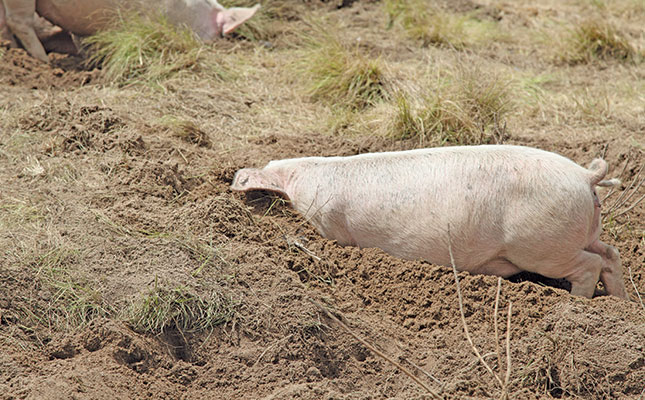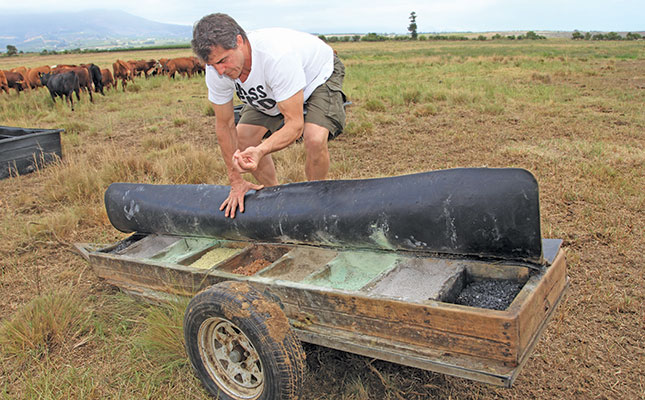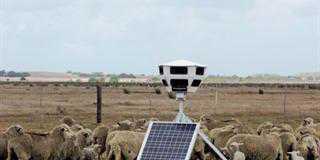
Photo: Glenneis Kriel
Much has been said about how the COVID-19 pandemic exposed serious limitations in the global logistics and food system, and how Russia’s invasion of Ukraine makes it even more unlikely that the world will be able to end hunger by 2050.
But Angus McIntosh, better known as Farmer Angus, who farms livestock at Spier near Stellenbosch, argues that the situation is compounded by the misconception that the world’s farmers will have to feed a projected population of nine billion people by 2050.
“The world is already producing enough food to feed between 11 billion and 14 billion people. [However], our problem is that a lot of food is wasted along the supply chain or grown for the wrong reasons, such as to feed cattle [or other livestock in intensive farming concerns] or to produce biofuels,” says McIntosh.

Along with this, he believes that economies of scale have resulted in small family farms being replaced by large businesses that are mostly profit-driven.
“Most of these businesses, like mining companies, try to squeeze as much as they can out of the land through the use of intensive production systems and ever-increasing volumes of artificial inputs, such as fertiliser, antibiotics and hormones. These not only have a harmful impact on the environment, climate change and animal health, but also on soil [health].
“Increased use of chemicals have resulted in widespread problems with antimicrobial resistance, [amongst other issues].”
He adds that intensive production systems are commonly thought to be the only way to supply the population with affordable, nutritious food, but the price of this food should be doubled to account for its negative impact on the environment.
Moreover, intensively produced food is less nutritious than food produced before the use of artificial fertilisers became common in the 1950s.
“With the arrival of artificial fertilisers, we started producing nutrient-poor artificial foods,” he says.
A 2004 study conducted by the University of Texas in the US found that since 1950, calcium content, on average, declined 16%, iron by 15% and phosphorus by 9% in the 43 vegetables analysed.
Plant-based diets
Vegetarianism and veganism are not the solution either, argues McIntosh. While vegetarians and vegans are right to voice concern about animal welfare, he says that they are misguided if they have stopped eating meat for environmental reasons.
He explains that plant-based diets have accelerated deforestation because of the vast quantity of plant proteins required to replace animal protein in diets.
There is also the problem of climate. In South Africa, for example, vast tracts of land are suited only to livestock production because they are relatively dry, and the planting of crops in these ecologically sensitive areas would be disastrous.
Livestock in these systems are not only a valuable source of income, but play an important role in keeping the veld in shape through strategic grazing, in the absence of the nomadic game that used to move through these parts, he explains.
Regenerative farming
McIntosh also sees livestock as key contributors to our future survival through the role they play in regenerative farming. He explains that in this production approach, the farm is seen as a living organism, and methods used include crop rotation to break disease cycles, no- or minimum tillage to maintain soil structure, and multispecies cover crops to bring diversity to the system and improve soil health. These strategies and tools are continually adapted over time to account for changes in the system.
Livestock play a vital role in this, as is evident from McIntosh’s own farming experience at Spier. In his operation, layers, pigs and beef cattle are managed to rotationally graze strips of pasture for short periods before being moved to the next strip.
McIntosh points out that these are true ‘outdoor’ chickens and pigs and not ‘free-range’, a term he feels is used to dupe consumers into thinking the animals are treated more humanely and their meat is healthier than intensively produced livestock.
“The problem is that ‘free-range’ very much equals ‘barn-raised’, as defined in the US.
“The animals have access to a small outdoor area, but most prefer to stay inside. In the absence of mobile housing, there’s a build-up of litter, which exacerbates health problems and increases the risk of food-borne disease such as E. coli.”
The animal factor
McIntosh, by contrast, makes use of high-density strip grazing, which means the animals are systematically moved over 123ha of irrigated pastures on the farm, mimicking the way a herd of game ranges through the veld when they have access to large, open spaces.
The cattle are moved three times a day, the pigs once a week, and the layers in their egg mobiles daily. The pastures are given a minimum of six weeks to recover before being grazed again, which also helps to prevent a build-up of parasites.
McIntosh says that in this set-up, each animal type offers its own benefits, and these are far greater than indicated merely by the levels of nitrogen, phosphorus and potassium in their urine and manure. The animals loosen the soil in their own manner, while their excrement stimulates microbial activity and creates mild organic acids that free up nutrients, which may have been otherwise unavailable.
McIntosh argues that this is one of the most effective ways to build up soil carbon levels.
Neal Kinsey, in his book Hands-on Agronomy, argues that a ton of beef manure contains 80% moisture and holds about 180kg of organic material, and this helps control the slow release of nitrogen.
These benefits, however, are lost when animals are produced intensively, with manure being accumulated in one place. When not used for composting, it only worsens environmental problems.
“With fertiliser prices spiking, it’s time for farmers to re-evaluate the value of livestock urine and manure as a fertiliser replacer,” says McIntosh.
He is also experimenting with chicken feathers from the estate’s butchery as a means of improving vineyard health at Spier. The feathers are used as a mulch, which has been found to cool the soil and increase soil nutrients and biodiversity. They are applied at the bases of the vines during winter.
Measuring soil health
Soil analysis conducted by Brookside Laboratories in Ohio, US, confirmed that McIntosh’s farming practices resulted in a significant and rapid enhancement of soil organic carbon between September 2011 and January 2013.
These levels were sustained into 2020. The audited carbon savings resulting from this project amounted to 8 785t of carbon dioxide (CO2) over this time because of emission savings, thanks to McIntosh’s regenerative agriculture methods, and the fact that the animals were not fed any grains.
The farm, which sells carbon credits generated from the pastures where its cattle graze every three years, earned a total of R273 000 for 7 101t of CO2 sequestrated for the three-year period up until 2020.
Of this, R100 000 went to the cattle herdsman, while the rest was divided between the farmworkers.
“A return flight between Cape Town and London emits 2t of CO2. Just imagine what we could achieve if more farmers in fertile areas could sequester carbon,” says McIntosh.
With the help of livestock, increased diversity and soil health, farmers who use regenerative agricultural practices are able to move away from the use of artificial inputs, such as fertiliser, hormones and antibiotics, says McIntosh. He explains that the stocking rates are much lower than in factories, feedlots, broiler houses or layer cages, which results in less competition for food and reduces stress. As a result, the animals are more resilient and less susceptible to disease.
In addition, McIntosh uses only natural measures to prevent and deal with health-related problems. The cattle, for instance, have access to a free-choice mineral lick in a nine-compartment wagon to ‘self-medicate’ nutrient and other deficiencies (see box). This has allowed McIntosh to produce his animals without the hormones or routine antibiotics often associated with conventionally produced livestock.
McIntosh believes that in order for the world to create a healthier food system, producers need to move away from intensive production and towards ‘outdoor’ livestock production. Animals should be used to graze pastures in rotation, which would help build soil health and nutrient levels organically, he says.
He also believes there should be a significant increase in sheep and cattle production, and that some croplands should be replaced with multispecies pastures for the purpose of animal production. Farmed animals should not receive any hormones, growth stimulants or routine antibiotics, he says, to ensure a healthier food system.
Email Angus McIntosh at [email protected].












